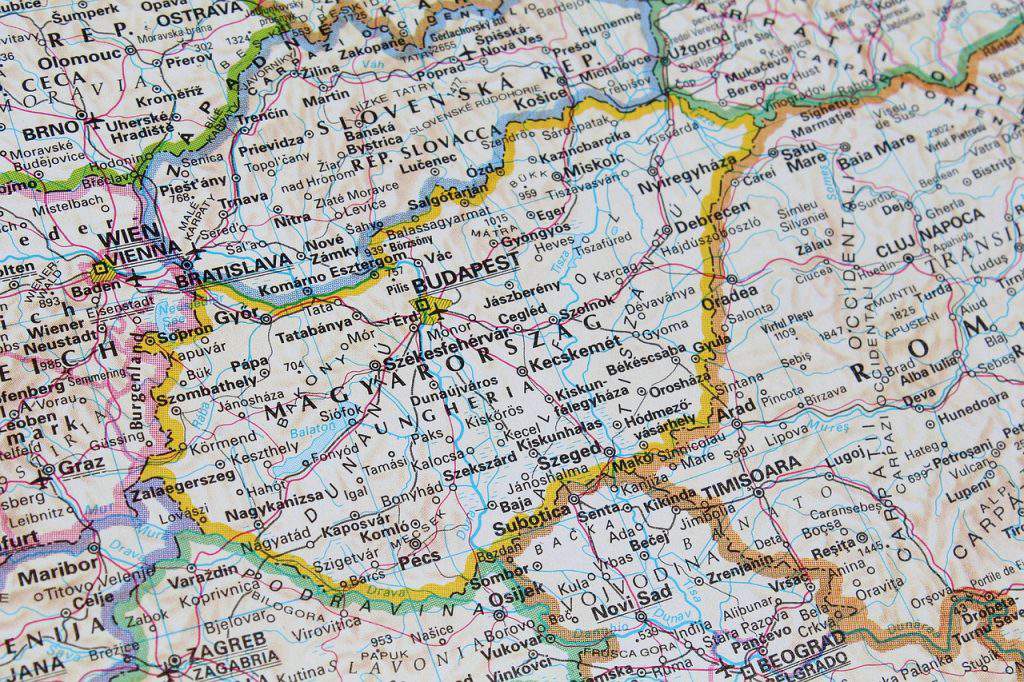9 amazing facts about the Hungarian language that most people have never heard of

We collected 9 little-known fascinating facts about the Hungarian language:
1. Did you know that one of the earliest traces of the Hungarian language was unearthed in Nova Scotia, Canada?
Yarmouth County Museum in Nova Scotia safeguards a unique artefact – the Runic Stone, shedding light on Hungarian presence in America predating Columbus. Tyrkir, a Hungarian voyager accompanying the Vikings on their expeditions around 1000 AD, left his mark in stone with a 13-character inscription. Scottish travel writer Samuel Laing first disclosed this information about Tyrkir back in 1844, in London. While initially attributed to Norse runes, linguists later confirmed the language of the inscription to be Old Hungarian. Szilva Lajosné decoded the infamous finding in 1984: “Ericson járt e hejen is sok társával.”
2. Did you know that one of the most valuable incunabula in the Library of the British Museum in London also bears the Hungarian language?
Dating back to 1533, the opening sentence reads: “Az Ephesom helyeknek yrth Zent Pál levelének elsew capitoliuma.”
3. Did you know that a group of linguists from the Department of Linguistics and Phonetics of Sorbonne University embarked on a quest to unravel the ancient roots of various languages?
With the help of modern tools and techniques, they sought to identify languages preserving the most ancient elements of literacy and containing the most etymons (the linguistic form from which another form is historically derived). According to the results: modern English contains 4% of etymons, Latin 5%, Hebrew 5%, the Pacific languages 7%, Indian languages 9% and Tibetan Sanskrit 12%. Surprisingly, modern Hungarian emerged as the frontrunner, boasting a staggering 68% of etymons, surpassing even ancient Turkish and Turkmen.
4. Did you know that linguists place a huge emphasis on the question of antiquity of modern languages?
Hungarian linguists and scholars have devoted over two centuries to the pursuit of unravelling linguistic antiquity. Figures like József Kerestesi, Sándor Kőrösi Csoma , István Horváth, Mihály Táncsis, Zsigmond Varga and László Pass have tirelessly delved into the origins of Euroasiatic languages. Renowned linguist and polyglot Ferenc Kemény, who understands 40 and speaks 15 languages) asserts Hungarian as the oldest among Euroasiatic languages.
5. Did you know that Hungarian family names are used as geographical names in all corners of the world?
Dr Bátor Vámos-Tóth, residing in Hawaii, and his colleagues have meticulously catalogued examples of Hungarian names and words used in countries all across the globe. They have established that over 6000 geographical locations bear Hungarian names, including cities, smaller towns, rivers and hills spanning India, Iraq, Malta, Tunisia, Burkina Faso, Philippines, the Caucasus region and Udmurtia. The most common names are: Almás, Káldi, Kocsis and Vajas.

6. Did you know that English political economist, traveller, polyglot and the 4th Governor of Hong Kong Sir John Bowring spoke fluent Hungarian?
He translated numerous Hungarian poems into English, which were later collected in a book titled “Poetry of Magyars”. As the foreword of the book reads, Bowring reckons that ”the Magyar language stands afar off and alone. The study of other tongues will be found of exceedingly little use towards its right understanding. It is molded in a form essentially its own, and its construction and composition may be safely referred to an epoch when most of the living tongues of Europe either had no existence, or no influence on the Hungarian region.”
7. Did you know that the Hungarian language is one of a kind in term of effects of compression on language?
There is no denying that the Hungarian language is a truly unique linguistic phenomenon, characterised by its rich phonetics and intricate grammar, including 19 noun cases and a myriad of suffixes and prefixes.
8. Did you know that Western alphabets usually contain around 7 vowels?
9. Did you know that in the list of the most melodic languages first comes the Italian language, followed by the Greek and the third most melodic language is the Hungarian?
Italian cardinal, famous linguist and hyper polyglot Giuseppe Mezzofanti (he could write in 58 and spoke 103 languages), once said to the Czech linguist, Ludwig August Frankl: “Do you know which language is equal to Latin and Greek in its structure and rhythmic harmony? It is the Hungarian language. I am familiar with the new Hungarian poets, whose verses are completely mesmerising. Let us watch the future, for the poetic genius will have a sudden upswing, which will prove my statement to be true. It seem as if the Hungarians themselves do not realise what treasure their language hides.”
Unlocking the mysteries of the Hungarian language reveals a tapestry woven with historical significance and linguistic brilliance, enriching our understanding of cultural diversity and human expression.
Read also:
- Famous Hungarian Proverbs vol. 1.
- The world’s Easternmost Hungarian village by the Black Sea – VIDEO, PHOTOS
Translated by Ekaterina Egorova
Source: szabadonebredok.hu






